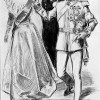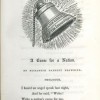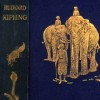
Peter H. Hoffenberg, “1871-1874: The South Kensington International Exhibitions”
The series of annual international exhibitions held during the early 1870s at South Kensington, London, were not particularly successful, or popular, but they were influential in the history of exhibitions. The alleged failures and the cancellation of the final annual exhibition halfway through the intended decade-long series of events provoked considerable discussion about the purpose, scale and expectations for exhibitions, which were no longer novel or limited to a particular city or nation-state. There were some successes, notably for the Australian colonies and British India, and for very specific trades and exhibitors, but the public discussion and those limited successes have generally failed to capture the attention of scholars. These events are rarely mentioned in books and articles about exhibitions and, when discussed, are considered to be failures without merit. This BRANCH contribution recognizes that other exhibitions were more popular and more successful, but also recognizes that the South Kensington shows were significant in addressing criticisms of exhibitions in general and in the generational history of both the shows and their organizers. The 1870s proved to be a pivotal period in the history of such exhibitions and the consideration of what merited public culture. The mantle was passed from Sir Henry Cole to his successors and the ambition of holding annual international exhibitions was replaced by more thematic shows in Britain and bold international shows in the Australian colonies. Amidst the general impressions of failure, there were also successes at the shows and those highlighted how inter-national exhibitions could prove useful in a changing world.

Kathleen Frederickson, “British Writers on Population, Infrastructure, and the Great Indian Famine of 1876-8”
This article examines British writing about the 1876-8 famine in southern and western India. In British newspapers and journals, the turn to thinking about famine in terms of the total population obscured the extreme variations in food access that worsened with rising economic inequality. When the British press in the late-1870s turned to human causes of famine, they either argued that India’s population overburdened India’s land, or suggested that more rail construction would prevent enough deaths sufficiently to mitigate British responsibility for famine conditions. The turn to population-based arguments helped either to perpetuate the belief that famine was a quasi-natural part of India or to parse the sudden increase in the frequency and severity famines in India under British rule.

Nicholas Daly, “Anthony Hope’s The Prisoner of Zenda (April, 1894) and the Rise of Ruritanian Fiction”
Anthony Hope’s bestseller of 1894, The Prisoner of Zenda, inspired a subgenre of adventure romances set in imaginary, semi-feudal European countries, of which Ruritania is the original. English and later American protagonists stumble into plot-driven narratives that usually feature some combination of schemes against the throne, doubles or mistaken identities, swordplay, and love at first sight. Since the 1890s, Ruritanian backdrops have been reworked for a variety of purposes, from Balkan spy novels, to interwar operetta, to Cold War satires, in such fictional territories as Ixania, Krasnia, and Grand Fenwick.

Shanyn Fiske, “Modeling Masculinity: Engendering the Yellow Peril in Fu-Manchu and Thomas Burke’s Limehouse Nights”
This entry deals with the event of the Yellow Peril, which generated fears of “Chinamen” as sexual predators, savage murderers, and criminal masterminds plotting world domination. Curiously, while these images lend Chinese men an aura of powerful virility, popular fiction credited with sensationalizing the Yellow Peril often depicted them as asexual or effeminate. Focusing on the first three novels of Sax Rohmer’s Fu-Manchu series and Thomas Burke’s Limehouse Nights (1916), I challenge the common critical assumption that the feminization or desexualization of Chinese men served to symbolically disempower a political threat. Instead, I suggest that in their interactions with their white counterparts, effeminized and / or desexualized Chinese male characters highlight problems in turn-of-the-century reconfigurations of masculinity. Such problems included recalibrating the Victorian balance between gentlemanly restraint and soldierly aggression in an unstable imperial context; redefining a sense of autonomy in a mechanized world; and renegotiating gender relations in a feminist environment. More broadly, I venture that the critical apparatus of Orientalism, which a number of theorists have applied to Rohmer’s works, is inadequate in explaining the complex interactions between Chinese and Britons in the early twentieth century. In examining the entangled racial and sexual tensions in these works, this entry historicizes the Yellow Peril within a broader context of Western male self-fashioning.

Denae Dyck and Marjorie Stone, “The ‘Sensation’ of Elizabeth Barrett Browning’s Poems before Congress (1860): Events, Politics, Reception”
Elizabeth Barrett Browning’s Poems before Congress paradoxically addresses a political event that never took place: a meeting of European powers to discuss the “Italian question” planned for January of 1860. Nevertheless, the collection addresses several momentous historical developments, including the Second Italian War of Independence in 1859, the intervention of Napoleon III of France in the Italian struggle, and the international conflict his intervention precipitated. Indeed, the book’s publication and the sensation it created in themselves constitute a plurality of events, since the collection appeared under differing titles in England and America and encountered differing responses in each country. Contrary to the still dominant critical view that the volume was almost universally denounced, its reception was shaped by diverse locations, shifting chronological contexts, and conflicting political affiliations. Close analysis of the reviews underscores the importance of these wider contexts, which influence what otherwise appear to be primarily literary or aesthetic judgements. At the same time, analysis of varying responses to not only “A Curse for a Nation” but also “Napoleon III in Italy” and other poems in the volume demonstrates a number of recurring points of contention. These include the collection’s title, the politics of interventions across national borders, English liberalism, the nature of democracy, cosmopolitanism versus nationalism, women writers in relation to politics, poetic form, and, most of all, EBB’s representation of Napoleon III—the issue that is front and centre in most of the 1860s reviews and that shaped, in turn, reactions to all the rest.

Wendy S. Williams, “‘So Very Japanny’: The British Reception of The Mikado in 1885”
This article examines the writings of The Mikado producers and opera reviewers in 1885. It shows that the British were eager to create a quaint, picturesque, “authentic” image of Japan, based on familiar art objects, in order to ease national anxiety about a quickly developing country that was difficult to understand.

Wendy S. Williams, “‘Free-and-Easy,’ ‘Japaneasy’: British Perceptions and the 1885 Japanese Village”
This essay examines press reviews and accounts of the Japanese Village in London from newspapers and periodicals in 1885. These show that although writers were fairly confident that they “knew” the Japanese culture, they had only a superficial understanding of it, and they often depicted Japanese people as simple, coarse, and inferior. These writings largely reflect British feelings of superiority, enchantment, and confusion regarding Japan, a quickly progressing country that was not easy to classify.
![Figure 2: First Scottish colony for New Zealand. [Reprinted] Copyright People’s Palace Museum, Glasgow Green [ca 1981]. Alexander Turnbull Library, Wellington, New Zealand. Ref: Eph-C-IMMIGRATION-1839-01. Used with permission. http://natlib.govt.nz/records/22730739.](https://branchcollective.org/wp-content/uploads/2017/04/2-First-Scottish-Colony-for-New-Zealand-100x100.jpg)
Philip Steer, “On Systematic Colonization and the Culture of Settler Colonialism: Edward Gibbon Wakefield’s A Letter from Sydney (1829)”
In 1829, Edward Gibbon Wakefield published his first statement of a “systematic” theory of settler colonization, A Letter from Sydney: The Principal Town of Australasia. Wakefield offered a novel economic theory of the relationship between population density and successful colonization, hinging on the establishment of a minimum or “sufficient” price on colonial land, and he spent the next few decades at the forefront of efforts to promulgate and profit from it. The theory of systematic colonization was first put into practice in 1836 in the new colony of South Australia, and then more extensively in New Zealand in 1839; in both cases, speculative mania in Britain precipitated the invasion of thousands of settlers, even though the settlements were as yet unmapped. Wakefield’s theories were also at the center of a new imperial imaginary that emerged in Britain by the 1850s, which established Australia and New Zealand as pastoral locations capable of restoring damaged British subjects. In spurring the vast expansion of migration to Australia and New Zealand, contributing to the genocide and dispossession of indigenous populations, and accelerating the destruction of local ecosystems, systematic colonization constitutes one of the most powerful and destructive examples of the ability of Victorian representations to permanently reshape the globe.

Mario Ortiz-Robles, “Animal Acts: 1822, 1835, 1849, 1850, 1854, 1876, 1900”
What does the history of animal rights have to tell us about Victorian Britain – and how do legislative gains, specifically Parliamentary Acts, appear when read in tandem with theatrical performances and literary depictions of animals? This article reads the former category alongside the latter two, paying particular attention to how artistic representations of animals, including Rudyard Kipling’s The Jungle Book, blur the lines between human and animal behavior. In doing so, it sheds light on how animals were figured as part of a racialized discourse, using Foucault’s notion of biopower to help frame the complex ways animal rights, and animalism, were portrayed in politics and culture.

Anna Vaninskaya, “Russian Nihilists and the Prehistory of Spy Fiction”
Although the rise of modern British spy fiction is usually dated to the Edwardian period, with the names of Kipling, Conrad and Buchan among the first to be mentioned, the genre owes its existence to a little-noted precursor in late Victorian popular literature: the Russian Nihilist romance. Many of the ideological and formal aspects of the genre can be traced back to the tales of police espionage, terrorist revolutionaries, and double agents that titillated audiences in the last decades of the nineteenth century. In the 1880s and 90s, the age-old literary figure of the spy underwent a number of transformations that would establish its new meanings for the new century.
